Congratulations! You’ve been picked to take a comic and put it on the screen. I hope you don’t screw that up. I mean, not Marvel Cartoon Super Heroes bad, nobody would do that again, but, well, there are some problems.
First of all, your core market knows the story you’re telling. Many of them can recite it line by line with detailed descriptions of the panels even after they get drunk, fall down the stairs and concuss themselves. Twice. Unlike nearly any other branch of television or movies, the audience is aware they know more than you do about the subject.
And before Stan Lee says anything, those fans never forgot Banner’s first name.
So you’ve got a problem. They know the story and you have to keep them entertained, so you need to surprise them. Which is to say, you have to make changes so something unexpected happens. But you have to show you respect the material. No plastic nipples on everyone but Batgirl, no Alicia Silverstone saying she didn’t even know there was a Batgirl. And Captain America didn’t fight the Italians once during World War II, he should not be fighting an Italian Red Skull now.
But take heart, True Creator. There’s a precedent to your problem. Everyone knows your story. And every novelist who sat down to write a story about King Arthur knew that their audience knew the story. And many of the same tactics used for Arthurian novels are used in superhero animation today.
Before They Were Great
He was called Wart, because it kind of rhymed with his name. Or so TH White told us in Sword in the Stone, later rewritten to become the first part of The Once and Future King. In the original book, White told the story of young Arthur, before he or anybody else had any idea he would ever be king.
Merlin takes a role of teacher, here. He variously turns Wart into an ant, a bird, and other animals. Each time Arthur learns something that will help him be the king he needs to be. The whole thing is wrapped around how young Arthur finds his way.
Animation did the same with Iron Man: Armored Adventures. This story deals with a teenaged Tony Stark. Naturally, he is no more injured in a war than Wart would have been. But just as Sir Kay is changed from loyal companion to bully, everybody becomes Tony’s school friends. So Pepper Potts is there as a feisty friend rather than an adoring secretary, though she is a femdork, lank-haired, and freckled like the character was originally way back in Tales of Suspense. James Rhodes is Rhodey, but he’s not a Colonel and isn’t even in the army yet, since he’s still in high school. Happy Hogan is a big dumb kid, apparently winding up with cauliflower ears and being punch drunk before he begins his boxing career. And the Mandarin is Gene Khan, Tony Stark’s friend who goes off the rails.
The relationship with parents, very different between Stark and Khan, gives the underlying salubrious lesson, here. And it’s reinforced throughout the series in the same way Wart meets more and more hostile animals.
When They Were Starting Out
A similar tactic is used by Jane Yoland in Sword of the Rightful King. She tells the story of an Arthur who has just ascended the throne and faces dangers due to his naivete. Merlin has to step in and protect and train Arthur. The same tactic was used in The Ultimate Spider-Man, where Peter Parker has just gained his powers and doesn’t know how to use them, though he has managed to get a little bit of a reputation. So Nick Fury takes him on so SHIELD can train him and an equally young Power Man, White Tiger, Iron Fist, and Nova. It was used again in the first season of The Legion of Superheroes, which has a Superman so new he hasn’t even tried out all his powers, yet. (I know, I know, legal issues kept them from using ‘Superboy’.)
Turn Minor Characters into Major Characters
At one point in The Avengers (comic, not animation), Captain America and Iron Man are talking. Iron Man suggests they make Rick Jones an official member of the team and give him a uniform like the Wasp wears. Wow – Junior partner or what? Well, let’s face it, her Wasp’s stings back then were basically BB guns on her wrists.
But in Avengers: Earth’s Mightiest Heroes, the Wasp and the Black Panther now get to shine. Janet van Dyne is still a socialite and pulls more faces than the rest of the team combined, but she’s not goofy like she was in the early Avengers. She talks about helping people and how important the team is to her. She does not spend her time chiding Henry Pym that the pills that make her wasp of human sized don’t task good enough.
Instead of the old black and red costume or the constant stream of new ones, it’s (logically) yellow and black like a wasp. Instead of a BB gun, she has bio energy stings which are a function of her own body.
The Black Panther now is more than an acrobat in a suit, he has access to ultra-high tech that can instantly break firewalls and do a lot else. He also has vibranium claws which cut through anything, which kind of reminds one of Wolverine.
Neither one was a major player in the comics in the sense that Captain America was. Neither has much of a rogues gallery (has the Wasp any at all?). But in Avengers: Earth’s Mightiest Heroes each of them is pushed forward to the great benefit of the story as a whole.
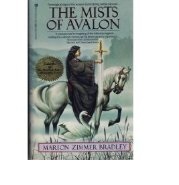
Compare this to Marion Zimmer Bradley’s famous Mists of Avalon (and others in the series). Mists is the Arthurian novel which doesn’t focus on Arthur, or Merlin, or any other male figures. It focuses on the until-then overlooked female characters in the story. So now the initiator of actions is not Merlin, it’s the Lady of the Lake. The focus is on female characters like Igraine, Morgause, Morgain, and Queen Gwenhwyfar (Guinivere) who each have their own powerbase and point of view. They are not the add-on characters who get a uniform to make them feel like part of the team.
Make it a Kids Story
Many Arthurian novels are aimed at children. There’s Roger Lancelyn Green’s King Arthur and His Knights of the Round Table and Andrew Lang’s King Arthur: Tales from the Round Table to name just two. There are obvious advantages with this tactic, in that the children are unlikely to have gotten bored with the story through familiarity. It’s fresh to them.
So this kind of book tends to plow the straight path, since it’s now a new path again. No reason to add twists except for those that explain something that might be obscure to kids, let them identify with it more, or keeps sex and death out of it. Another change frequently made in Arthur stories for kids is the descriptions are more detailed but not deep. There’s more what color’s someone is wearing but no analysis what drives the person psychologically.
Super Friends has had various names but started it with that one. It is the Justice League shrunk down to small children level, so instead of bad guys, it has people who would never have done [whatever they did] had they understood [the mess it would make]. Seriously, in every episode in the first two seasons, the Super Friends are advised of a problem (usually ecological) by their computer, they split up at some point to search the world with Aquaman searching ¾ of the planet, and then they find someone who breached dozens of laws but, because they didn’t realize, are let off with a reasonable discussion.
An all-around better kids version is Marvel’s Super Hero Squad Show. DC kept a very restricted line-up of it’s adult characters, adding Wendy, Marvin, and the wonder Twins to make up the numbers. Marvel went in the opposite direction, putting large numbers of its characters on screen, with the only addition being Reptil. Marvel recognized their cartoon was not only there to sell Hasbro figurines, but to teach kids how to read Marvel comics.
Super Friends has no sense of why anybody does what they do. Super Hero Squad Show, on the other hand, gives a cut-down, softened form of the comic book personality of each hero to their character in the show. So Wolverine is still surly, just not borderline homicidal.
The result is an altogether more watchable show, and altogether one of Marvel’s few small-screen victories.
Pull the Time Travel Trick
Mark Twain’s A Connecticut Yankee in King Arthur’s Court is one of the earliest stories involving time travel against the usual flow. In it, Hank Morgan, an engineer, travels from the nineteenth century to the 6th, becoming a magician in King Arthur’s Court. He has no magic, but he knows what gunpowder is, and knows what a flying buttress is. Arthur C Clarke’s dictum applies here: any technology sufficiently advanced will seem to be magic.
But all Morgan’s efforts and future knowledge do not stop Camelot falling or the Roman Catholic Church putting an interdict on him and helping usher in the Dark Ages. There is Pagan-Catholic conflict, but more prominently, Morgan plans to overthrow the nobility and implement a fully modern worker’s socialist republic.
Much the same thing underlies Wolverine and the X-Men. An explosion at the school kills Jean Grey and puts Professor X in a coma. The Professor wakes up 20 years later to discover the world is a wasteland. Fortunately, the Professor can use his telepathy to contact Wolverine in the past for brief periods. Together they work to prevent the disaster that leaves the world in its apocalyptic state.
The tropes of advanced technology, preventing impending disaster, a secret plan to overthrow the old order, and a counter-plan to overthrow any overthrow of the old order are all there in both stories. And where Twain preached socialism and a worker’s state in his novel, in X-Men the issue was tolerance
Go to the Hilt
As we’ve seen, novelists tend to change the story of Arthur, though less if they’re writing a children’s book. But there is one example in adult literature where changing to the story is less used. Some present the story of Arthur with such lushness, such depth, that the many facets of it are all exposed to light.
An example of this is Boorman’s movie, Excalibur, which follows a conventional line but does so with careful eye to detail and a layering of the different themes of the original. A simple example is Mordred appearing in armor with a helmet designed to look like a human face and hair – this was a late Roman custom, and rather dates when the movie is set. But it does so in a rich manner. It’s not tossed off as dialogue.
The same was done with Batman: The Animated Series. They took the many stories of Batman and brought them together, recrafting things in a single style. To match the darkness of the story, Batman animation cells were actually painted on black paper. In the same way, Excalibur used Ireland not only as the location for filming but as prop for the movie: scenes actually work around the scenery. The ‘spine of the dragon’ is a natural rock formation.
Batman reworks villains like the Riddler and the Penguin from the ground up, and creates new ones like Harley Quinn and Baby-Doll. It also carefully casts voices, most famously Mark Hamill as the Joker but with an equally good Arleen Sorkin as Quinn.
Excalibur has both more and less room to move in this area. Boorman chose to largely stick with Irish actors. The actors could ‘be’ their parts rather than famous people playing their parts. Which is to say he used unknowns like Helen Mirren, Patrick Stewart, Liam Neeson, Gabriel Byrne, and Corin Redgrave.
These are rare examples of sheer quality attracting an audience. The translation doesn’t always work, and in fact, most times it shouldn’t. Novels are not movies are not animation are not comic books. What works in one does not necessarily work in another, as Watchman should tell you. But when it works it reminds everyone how great the story is.
Gather Up Everything
Use the heroes, use the plots and figure the stories will click. Put a few chronological elements so everyone remembers how far along in the story they are. Emphasize the wonder of it all with big backdrops, big action, and especially emphasize how powerful these guys are. Add in some plot elements that are always there. That’s how they did it in Justice League and Justice League Unlimited.
They changed the name but it was the same series. Some common plot elements were retained, like the Green Arrow-Black Canary romance, and for that matter, Green Arrow’s strident championship of the poor.
This is exactly the path taken by Geoffrey of Monmouth, whose Historia Regum Britanniai or History of the Kings of Britain is one of the foundations of Arthurian literature. It is a work of (face it) fiction that traces the history of British kings from the arrival of the Trojans to the era of Saxon domination. If we can check the facts, like where Geoffrey details Julius Caesar’s invasion of Britain, he’s always. And when he mentions Roman Emperor Lucius Hiberias, well, there never was such an Emperor.
Where Geoffrey does describe Arthur’s reign, there is little genuine plot. It is simply this happens, then that. Knights are sent out on quests the way SHIELD agents are sent out on missions. Although, when Arthur is defeating the imaginary Roman Emperor in Gaul, there is a consequence in that Mordred seduces Guinevere and seizes the throne.
The story of Arthur here, like the Justice League animations, is episodic individual units tied together. It worked for Arthur and it worked for the Justice League.
Apply a Theme
When Marion Zimmer Bradley wrote Mists of Avalon, women were treated as secondary figures in books and movies – just there to make certain you knew the hero and his buddy weren’t gay, as somebody once described it. So she not only brought those characters to the front, she added the theme of feminism to the whole story. She was not the only one to ever do this to Arthur.
Following on Geoffrey of Monmouth by about 350 years was Sir Thomas Mallory, with his Le Mort d’Arthur. Right from the title, Malory says it’s a tragedy and, being a story with an ending, one expects something of a thematic unity.
But Mallory takes many different stories about Arthur that already existed and arranges them in an order that makes the individual units turn into a story. They tell of the rise of Arthur, how his knights travel through the land setting wrongs to right. They defend the poor and women. They fight local tyrants like the Black Knight. Sometimes the stories are dramatic, sometimes they are comic.
But then Britain is struck with a plague or sickness caused by a comet. They can find no cure until there is only one place to look for a magical solution. Arthur orders his knights to search for the Holy Grail and in doing so makes the story one of spiritual as well as material quest..
But as the knights search, Camelot rots from within. By the time they find the Grail, the kingdom they built is Moribund. Then comes the battle of Badon Hill, mentioned in the very earliest references to Arthur. Since it was mentioned but not given a background, it operates almost like a destiny. The battle occurs, Mordred kills Arthur and Arthur, Mordred. The sword is put back in the lake and Arthur is taken to Avalon from whence he will return like Superman awakening after his battle with Doomsday.
Mallory’s work is the version most commonly used as a foundation by other novelists, many of whom impose a new theme on the whole. White in The Once and Future King makes the story about avoiding war, Boorman in Excalibur makes it a Christian versus a Pagan ideal of kingship, and Bradley in Mists of Avalon makes it about feminism.
Strangely, people forget seeking the grail was originally to save a dying land. They remember the most spectacular part. Just like Superman.
The principles of the Grail and Superman alike are the self-sacrifice of one’s own power on behalf of those who need sustenance and justice. Not that this should really surprise us, Superman was the first superhero animation and the focus of that was the powers. And that’s to the good.
Like Arthur, his Round Table, and the Grail, people are familiar with your story and that lets you wring extra meaning out of it. Any little change you make can add much. It’s always dramatic when a couple dashes indoors with their baby in a storm. It’s even more dramatic if the couple are the Kents.
You now have an opportunity to take a comic book and turn it into a story with a deep theme of what it means to be human. You can create animation that will last 1700 years or more, be admired, be the inspiration for poets and authors, and some of the great men and women of history. I want on it my desk tomorrow morning, don’t screw it up.

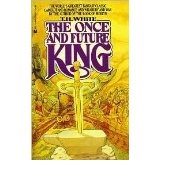
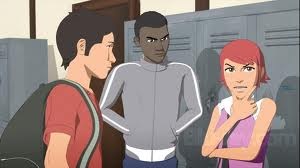
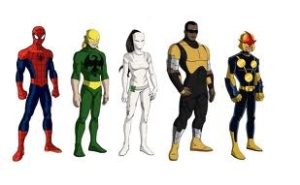
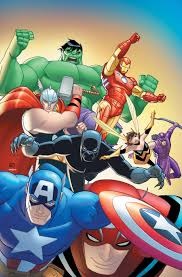
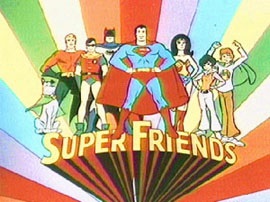
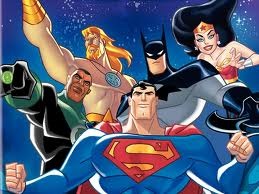
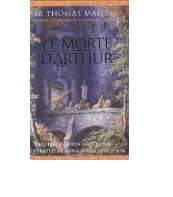
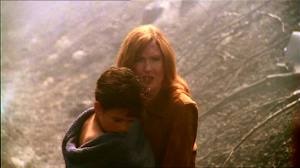
Comments are closed.